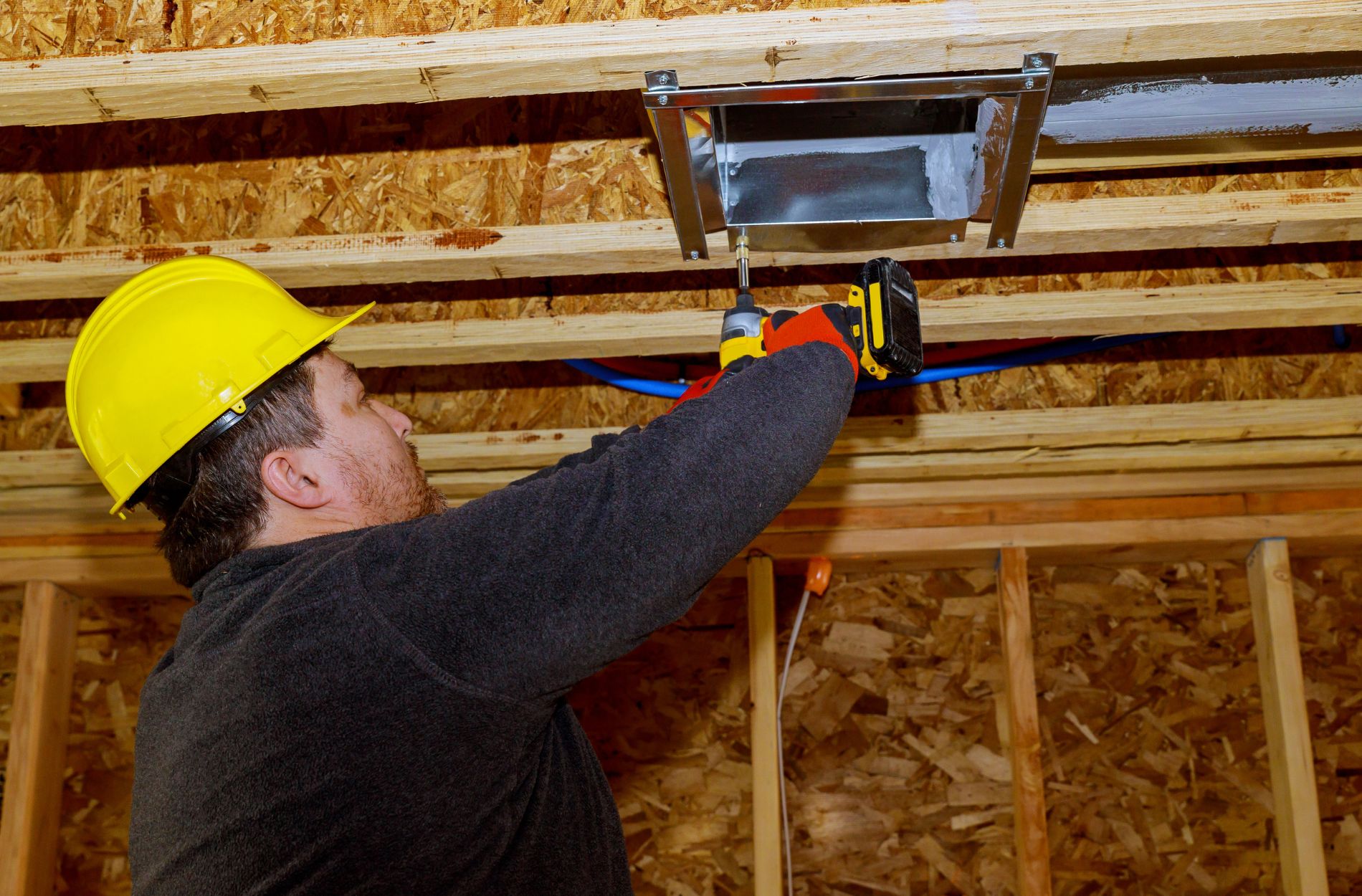In today’s increasingly energy-efficient homes, proper ventilation is more important than ever to ensure optimum indoor air quality. Two ventilation options that stand out for their power to enhance indoor air quality while maintaining energy efficiency are Energy Recovery Ventilators (ERV) and Heat Recovery Ventilators (HRV). These advanced systems work to exchange stale indoor air with fresh outdoor air, regulating humidity levels and temperature to provide homeowners with the perfect balance of comfort and health.
All Around Heating, Air & Solar Construction will explore the essential differences between ERV and HRV systems, their unique advantages, and how to determine the best choice for your home or commercial property based on your specific needs. As experts in the HVAC industry, we are here to guide you through the selection and installation process, ensuring you receive the most suitable solution that aligns with your property’s requirements and your preferences for indoor air quality.
Energy Recovery Ventilators (ERV): Regulating Humidity and Temperature
ERV systems are designed to transfer both heat and moisture between the incoming and outgoing air streams, effectively regulating the indoor humidity levels and maintaining the desired temperature. This technology is well-suited for hot and humid climates, providing the following benefits:
1. Comfortable Humidity Levels: By transferring moisture between air streams, ERV systems help maintain balanced indoor humidity levels, improving overall comfort for occupants.
2. Energy Efficiency: ERV systems work to reduce the load on your heating and cooling equipment by pre-conditioning the incoming air, resulting in lower energy consumption and utility bills.
3. Indoor Air Quality: As a ventilation system, ERV units promote a continuous flow of fresh, filtered air into the building while removing stale and contaminated air.
Heat Recovery Ventilators (HRV): Efficient Heat Transfer for Enhanced Comfort
HRV systems are designed specifically to transfer heat between the incoming and outgoing air streams. By doing so, they maintain a consistent indoor temperature while replacing stale indoor air with fresh outdoor air. HRV units are ideal for colder climates, offering the following advantages:
1. Consistent Temperature: HRV systems maintain a stable indoor temperature by transferring heat from outgoing air to incoming cold air, ensuring a comfortable environment for occupants.
2. Energy Efficiency: Similar to ERV units, HRV systems reduce the load on your heating equipment by pre-conditioning the incoming air, thereby contributing to lower energy consumption.
3. Improved Air Quality: With their continuous ventilation capabilities, HRV units contribute to improved indoor air quality by introducing fresh outdoor air while expelling contaminated air from inside the property.
Comparing the Benefits of ERV and HRV Systems
While both ERV and HRV systems boast similar functionality and overall benefits, key differences lie in their effectiveness in specific climate conditions:
1. Climate Considerations: ERV systems excel in hot and humid climates by managing both temperature and humidity, while HRV systems are designed for colder climates with dry indoor air, focusing solely on heat transfer.
2. Moisture Control: ERV systems may be the preferred choice if your property requires additional humidity control due to high indoor moisture levels or occupants’ health concerns.
3. Energy Savings: Both ventilation systems provide energy savings by reducing the demand on heating and cooling systems. The choice between ERV and HRV systems largely depends on the climate in which your property is located and your indoor humidity level preferences.
Selecting the Right System for Your Property
Choosing the appropriate ventilation system for your property involves considering its unique characteristics and requirements, such as climate, building size, and occupants’ needs. Follow these steps to select the ideal system:
1. Assess Your Climate: Determine the prevalent climate in your region, and choose the system better suited for the specific conditions. Consider ERVs for hot, humid climates and HRVs for colder, drier regions.
2. Evaluate Your Property: Consider the size and construction of your building, as well as occupants’ preferences for indoor temperature and humidity levels.
3. Consult with Professionals: Our technicians at All Around Heating, Air & Solar Construction can assess your property’s needs and recommend the most appropriate ventilation system based on your specific circumstances.
Maintaining Your ERV or HRV System for Long-Term Efficiency
Regular maintenance of your ERV or HRV system is essential for ensuring optimal performance, efficiency, and longevity. Follow these general maintenance guidelines:
1. Inspect and Clean Filters: Regularly check the system’s air filters for dirt or debris, and clean or replace them as needed to maintain good airflow.
2. Examine Heat or Energy Exchanger: Periodically inspect the exchanger for any signs of damage or wear, and clean it according to the manufacturer’s recommendations.
3. Schedule Professional Service: Schedule routine inspections and maintenance with our technicians to ensure that your system continues to operate at peak efficiency.
Conclusion
Understanding the distinct advantages and features of ERV and HRV ventilation systems can be crucial in determining the best option for your property. Our team of skilled technicians at All Around Heating, Air & Solar Construction is committed to guiding you through the selection, installation, and maintenance processes, ensuring that you receive the most effective solution for your property’s needs.
Experience improved indoor air quality, enhanced comfort, and energy efficiency with the assistance of our professionals. Contact our HVAC company in Chico, GA today to learn more about our comprehensive ventilation services and to discover the perfect ventilation system for your residential or commercial property.


